Impressive, without a doubt. More if it is unknown why hundreds of faces of considerable size —more than 800— decorate the ancient houses of Mogarraz, the town of portraits Walk through its narrow cobbled streets, between old buildings medieval built of stone, while their gazes seem to watch each of our movements, is somewhat disturbing. At least, at first.
However, that feeling does not last long. Basically, the time it takes to learn the details of the peculiar story what is behind Portrait2 388, the project for which Florencio Maillo, professor at the University of Salamanca in Fine Arts, decided to immortalize his neighbors in his town back in 2008 to transform it into an authentic open-air museum.
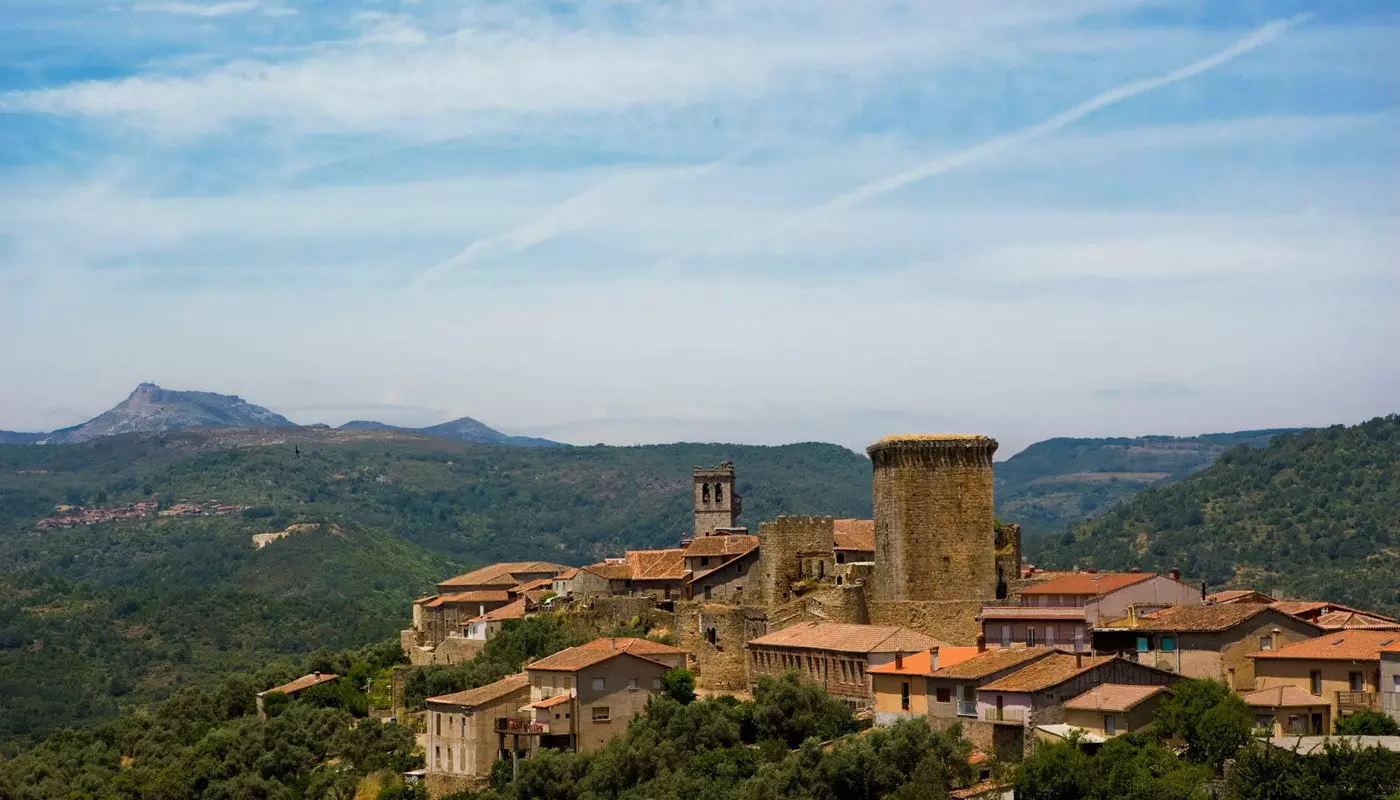
Panoramic view of Mogarraz, Salamanca.
Turns out, in 1967, A large number of residents of Mogarraz needed to renew their identity card, and for this they needed new photographs. An amateur photographer from the village offered to make them, and the negatives of those snapshots They were forgotten for years in a drawer. Already deceased, his widow found them by chance, and she, too, by chance, discussed it with Florencio Maíllo, who was clear about it: that had to become Something bigger.
Some years passed in which the painter remained busy with these chores without sharing with anyone what the end was. It wasn't until 2012, and before the astonished gaze of his neighbors, that were discovered the 388 portraits painted on brass plates hanging on the walls of the town —over the years, the collection has been expanding—, which until then had been covered with plastic bags: not only the inhabitants of Mogarraz They were delighted too the curious and travelers that, since then and more than ever, include Mogarraz on their route through this area of Salamanca.
Today they shine in the facades of private houses and in those of businesses, in those of the town's watchtower and in those of the church itself. All thus reveal who those were neighbours that once - many, still today — lived there.
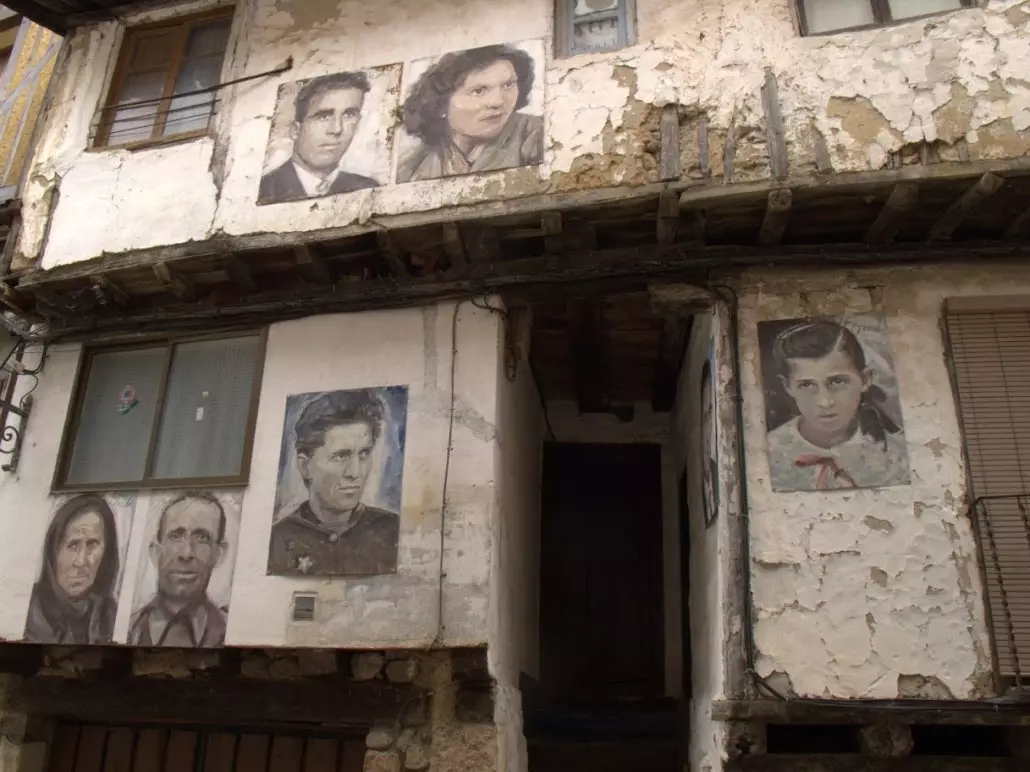
Portraits in Mogarraz, Salamanca.
OF TRAMONERAS AND CONVERTED JEWS
Today Mogarraz, the town of portraits, is inhabited by barely 300 inhabitants who contemplate how their people continue radiating that medieval essence despite the passage of time: it is not surprising that he belongs to the group of Most Beautiful Towns in Spain , and that it was also declared Historical-Artistic Ensemble in 1986. The best thing is to get lost in its streets, which twist without rhyme or reason forming a most irregular layout. Stopping in its details, in its flowered balconies and in the sgraffito of some of his buildings, and letting himself be fooled. At the end of the day, one probably ends up wondering what is it like to live in a place like this, where calm reigns.
Those traditional mountain houses, starring by stretchers that are in sight in its stone and adobe buildings. Yes: they also have their history. And it is that Mogarraz was built and repopulated in the 12th century by Frenchmen who arrived from Gascony, which is why a large part of its neighbors continue to have Cascon surname —the “g” would eventually become a “c”—: until recently, it was also preserved that of Roussillon.
With them, in addition to their surnames, they also brought their culture, that's why houses in this area of the Sierra de Francia are more reminiscent of small central european towns than those of Spain. the area was rich in chestnuts at that time, so it was the wood used for the structures, which for a long time remained hidden after the lime or, time later, covered by plates reused from drums to prevent deterioration. Now they shine again delight of those who come to know the town.
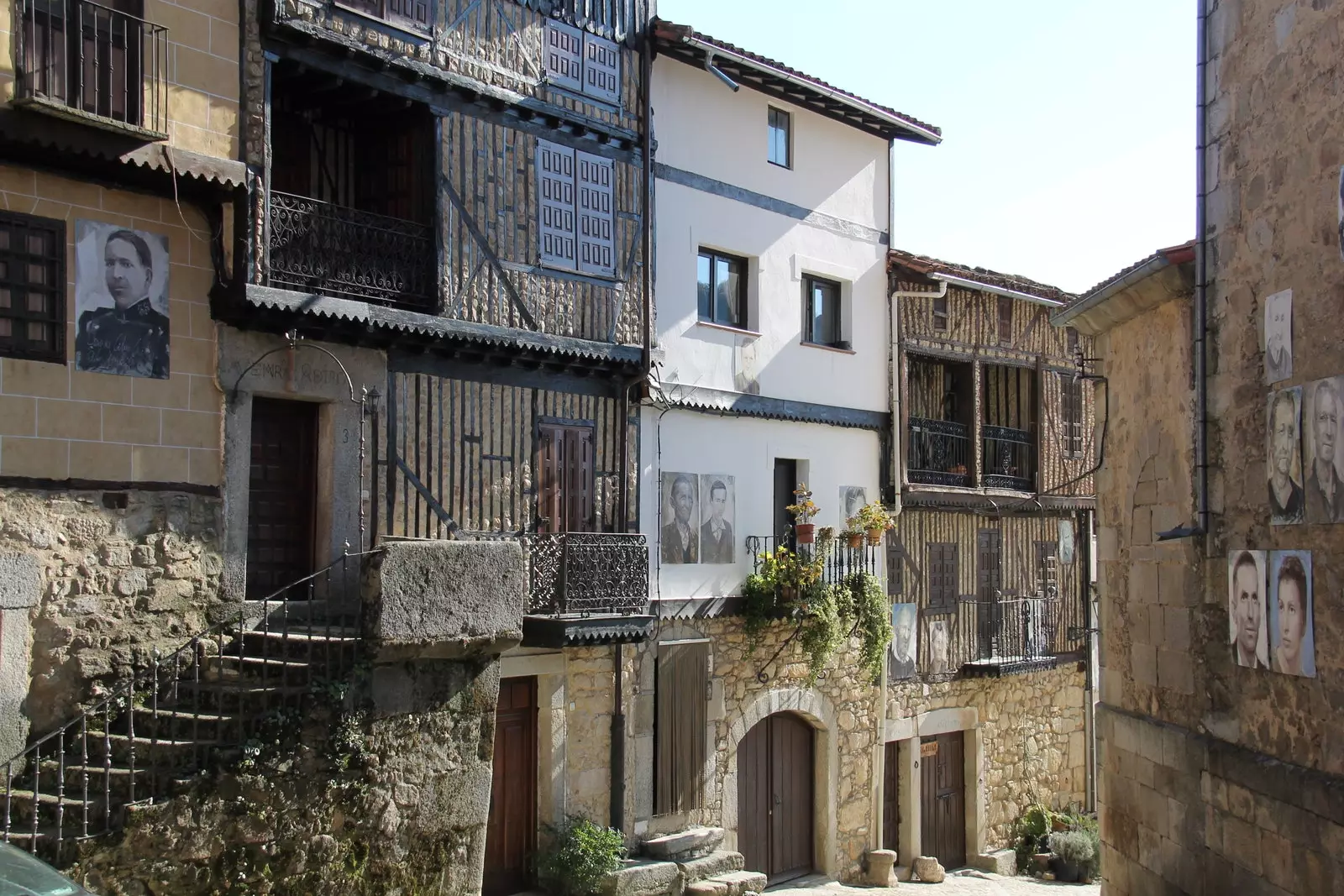
The streets of Mogarraz, Salamanca.
These structures mark the division of the buildings, mostly houses with the same distribution of spaces: in the bottom they used to meet the block —a large part of the population was muleteers, so they had pack animals— and the warehouse. And it is necessary to make a point here: Mogarraz belongs to the Sierra de Francia Wine Route, where the rufete grape is the great protagonist, and this was already so in the eleventh century. Therefore, a large part of the neighbors made their own wine, which they later consumed and/or sold. About the cellar, the two main floors of the house, and finally, the attic.
Speaking of wines: a huge building in the center of town, with a huge portrait hanging on its outer walls, functioned for a long time as a cooperative. It is estimated that at mid 60s, before rufete disappeared —to recover again today—, he came to sell one million litres.
Approaching the area more ancient of the town, where some buildings, sadly, They can barely stand another new detail draws attention: the lintels of the houses, that begin to look carved and very unique drawings. Many of them were, in the Middle Ages, the home of converted jews who, after fleeing from the south, reached this corner of Spain with the need to demonstrate his faith in Catholicism. Hence, many of the symbols are Marian and Dominicans.
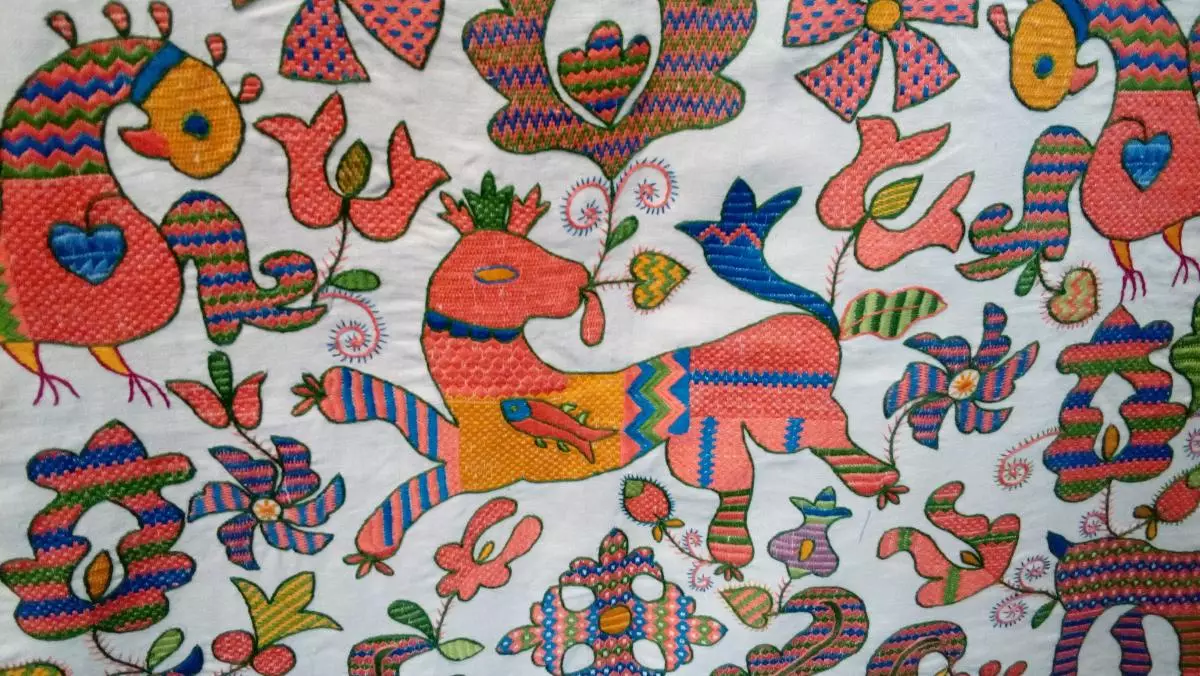
Serrano embroidery, Salamanca.
ON EMBROIDERY WITH HISTORY AND OTHER NEEDLES
Mogarraz also boasts of a great heritage that has been witnessed since the first instant. We have already been able to verify it, yes, but there is still more.
And to get to know it, we first stop at the Bell Tower, from the 17th century, a defensive construction located apart from the Church that was used when they had to warn of some event or danger.
Throughout Mogarraz we constantly come across another element that attracts attention: the water, pure and crystalline, it flows everywhere. In fact, there are up to 14 fountains and pipes scattered throughout the town, some even with 400 years of history. The reason? You just have to take a look at the environment in which the town is located, in the heart of the Batuecas and Sierra de Francia Natural Park, To understand. Surrounded by a nature that explodes in the form of mountains and rivers, what can you expect?
You must visit the Parish Church, an ancient building dedicated to Our Lady of the Snows and raised in stone in which time has taken its toll. He stores in his only ship a handful of religious pieces of some value and a portico that is worth stopping at. Towards the heart of Mogarraz, the Main Square, the ideal place to measure the pulse of the people: rest on one of its benches, say hello to stray cats that hang around this unique corner, or chat with the neighbors, popular for their good mood and hospitality, It's always a good plan.
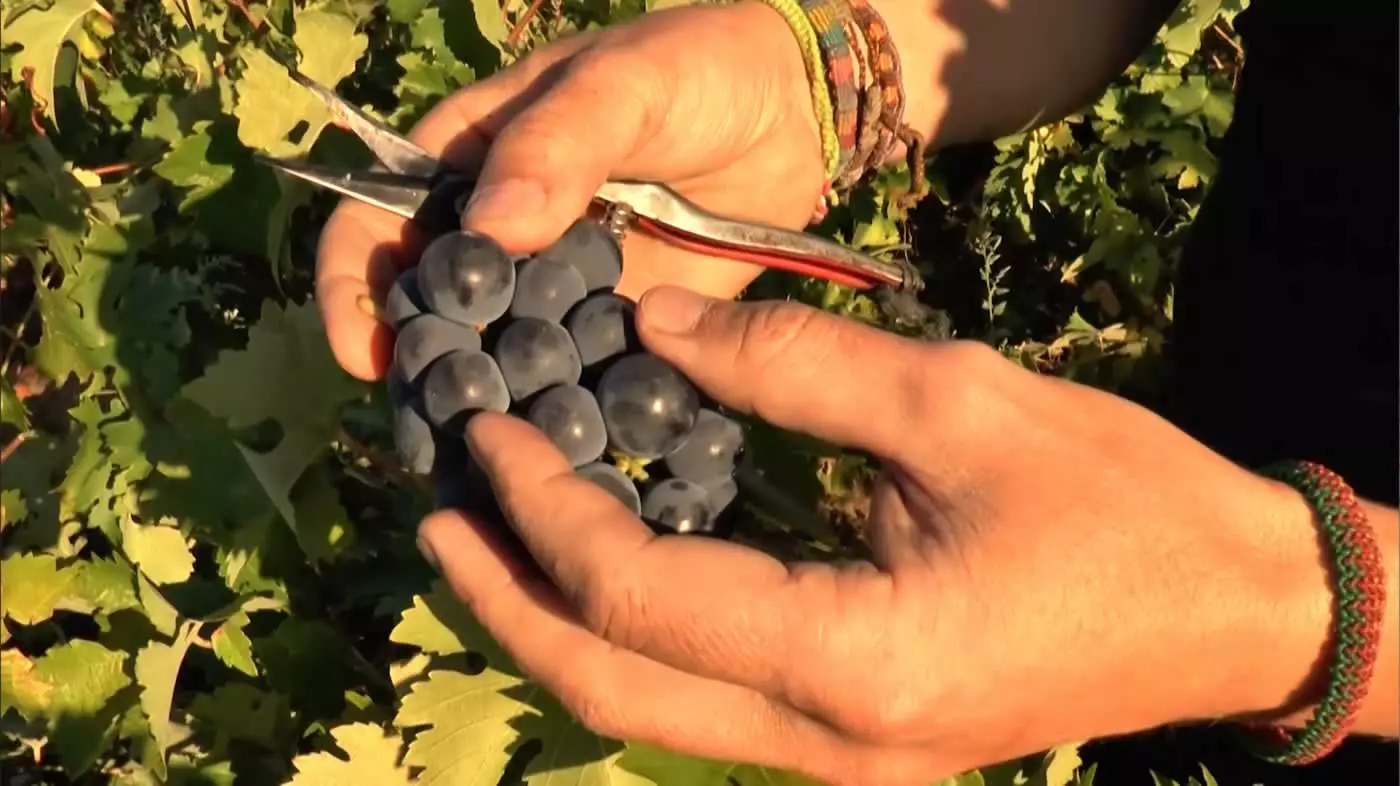
Rufete grape in Vinos La Zorra, Mogarraz, Salamanca.
Although it is also to visit the Ethnographic Museum or House of Crafts, located in the same square. Composed of several floors, it pays homage to three of the traditional trades that are still very much alive in the town: that of a jeweler - the gold and silver filigree they are quite a spectacle—, the one of Shoemaker, and the one of embroidery. In fact, there is no better place in the entire Sierra de Francia to see examples of the famous Serrano embroidery, so important in the area. So much so, that they are fighting for UNESCO to declare it Intangible Heritage of Humanity.
EAT AND SLEEP: NO, WE DON'T FORGET
At one of the entrances to Mogarraz, there where the Source and Hermitage of the Humilladero —from the thirteenth century—, expect a good handful of stops that will delight all those gastro lovers.
To begin with, in La Zorra, the famous winery of the town, whose wines are a benchmark in the Sierra de Francia. The family running the business are the Maíllos, who already in 1921 he devoted himself entirely to the wine world. Today, 100 years later, new generations at the forefront have once again done with the rufete grape —and with other varieties such as Calabrian, Aragonese or Viura— a selection of reds, rosés and whites that pair wonderfully with the delicious food that is dispatched in the area.
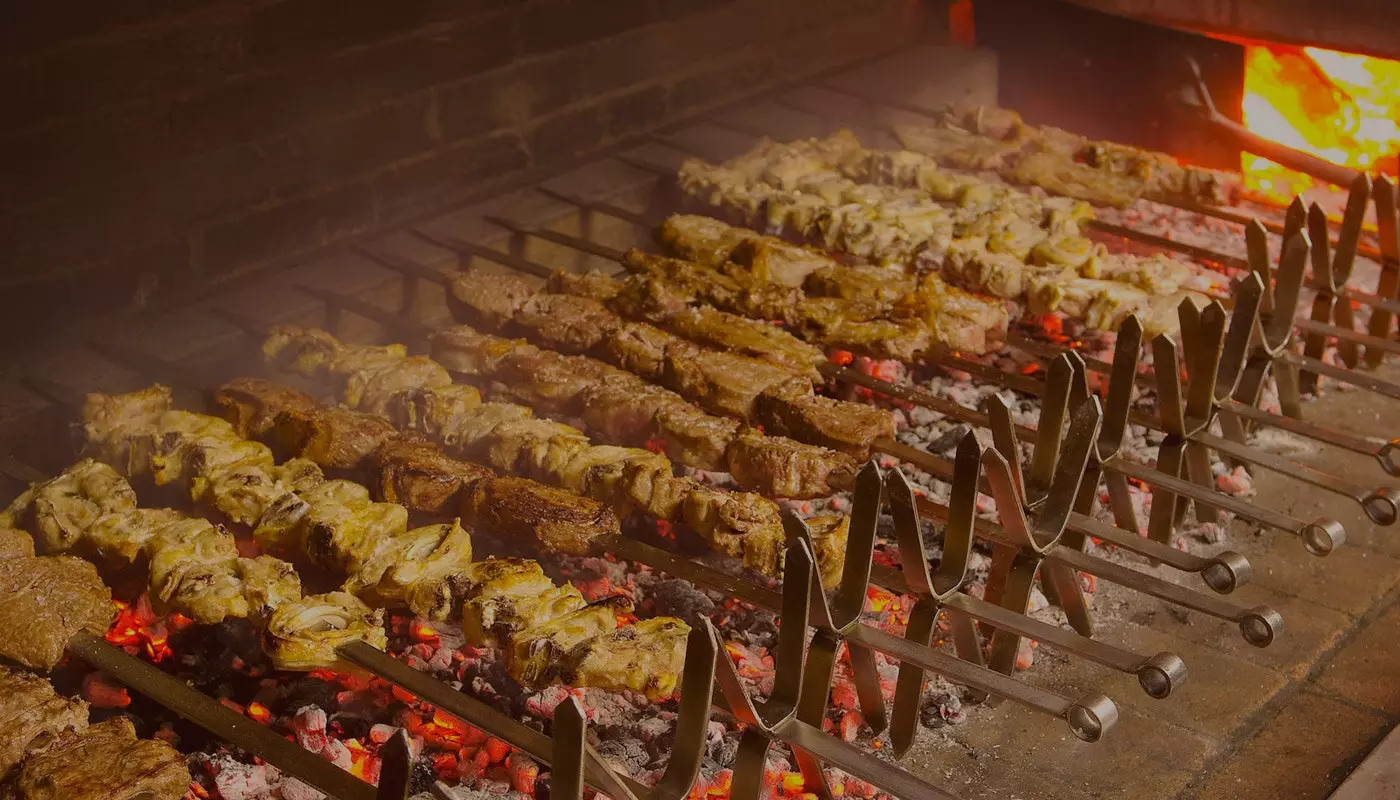
Grilled meats at the Mirasierra restaurant, Mogarraz (Salamanca).
In addition to making a guided visit to its wineries with tasting included, you can choose to walk a few steps to the Mirasierra restaurant, also owned by the same family, where you can wash down a traditional lemon serrano —recipe based on lemon, orange, egg, chorizo and marinated fish that, although it is difficult to believe, is delicious—or some potatoes wiggle: It will taste like glory to us.
Just opposite, Ibéricos Calama boasts of producing by hand everything related to the Iberian pig, raised in the pastures of Extremadura, of the highest quality. They have a recently renovated building in a modern style in which, in addition to working, there is a shop and a restaurant with various spaces in which try their deli.
something beyond, in the center of Mogarraz, another restaurant brimming with charm that should not be missing from the list: Taberna La Autoctona, divided into small spaces spread over the floors of an old building, bet on a relaxed atmosphere in which to continue making room for native wine combined with delicious dishes. You should not miss its famous croquettes, but neither are their risottos.
To sleep, there is no doubt: from the comfortable beds of the Hotel Spa Villa de Mogarraz you can hear the soothing sound of fountains that surround the house in which it is located. Built with noble materials and artisan carvings, summarizes in its different rooms all the mountain essence of this postcard town.
